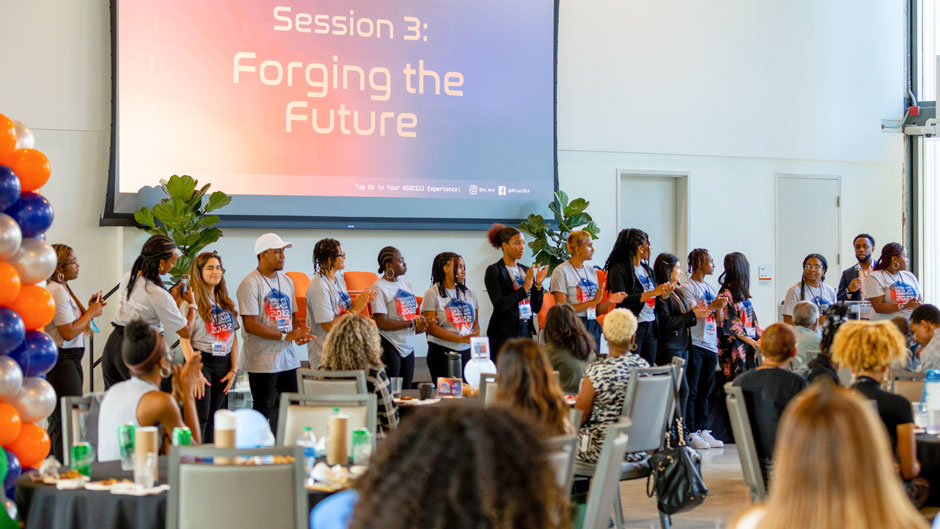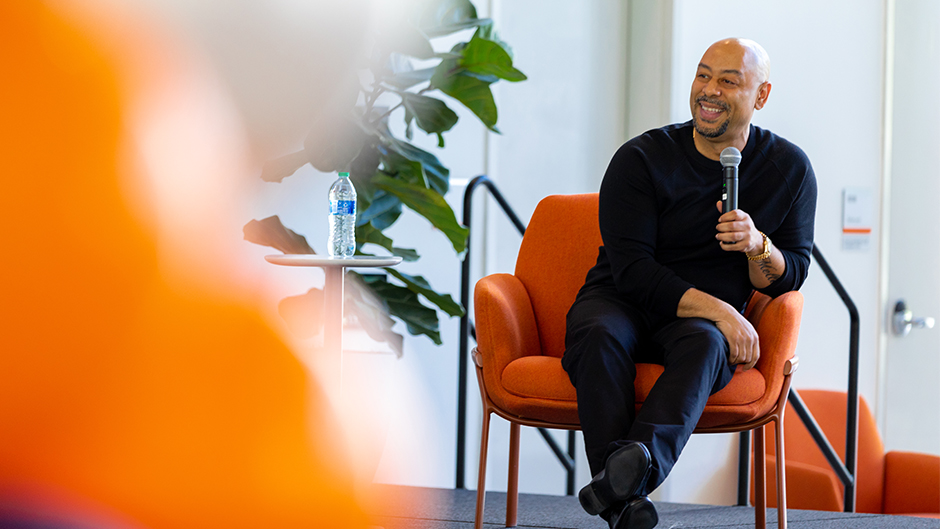The Lakeside Village Expo Hall at the University of Miami was packed with students and faculty and staff members who were thrilled to hear Raymond Santana share how his life experiences shaped him into the criminal justice advocate he is today.
After being in prison from age 14 to 19 for a wrongful conviction in the 1989 Central Park jogger case, the social activist, fashion designer, and businessman now commits his life to motivating young women and men of color to use their voices to speak up for social justice and to advocate for prison reform.
He addressed an audience of more than 100 as the keynote speaker for the Students of Color Symposium held on March 5 from 9 a.m. to 4 p.m. at the Lakeside Village Expo Hall. The event touted the theme “Forging the Future: Looking Back to Move Forward,” which centered on moving from the past racial strife toward a future of alliance and community.
“There’s enough work for everyone to be involved,” said Santana. “There’s a whole bunch of space for people to occupy. We need you to be prosecutors. We need you to be mental health advocates, wardens, presidents. We need to fill all those spaces. Once we occupy those spaces, we can create real change and create policies.”
The keynote discussion was moderated by Office of Multicultural Student Affairs graduate assistants Victor Rios and Caleb Taylor. Throughout the conversation, Santana shared details of the personal work it took to unravel years of being institutionalized and what it took to overcome a system that painted Yusef Salaam, Korey Wise, Kevin Richardson, Antron McCray, and him to be violent boys who were capable of such a heinous crime, without presenting any evidence. At the end of the moderated discussion, Tatiana Robinson—a junior studying interactive media, broadcast journalism, and communication studies who was also the speaker and sessions chair of the event, asked Santana questions submitted by the audience.
The Exonerated 5’s life story was retold in the 2019 Neflix docuseries, “When They See Us.” Santana credits the film for reigniting his mission to help others and turn his tragedy to triumph. Today, he says he better understands the justice system and dedicates his life to speaking to high school and college-aged young adults about the importance of education.
“It’s about you guys—the system is fighting to see who can get to you first. This is the reason why Yusef and I come to these platforms,” said Santana, referring to the criminal justice system. “The system wants you to occupy a jail cell and not a college dorm.”

Designed to engage students and support the University’s ongoing diversity efforts, this year’s symposium theme called on students to look back on what they can take from the past and present social movements to create change for the future.
Hosted by the Office of Multicultural Student Affairs and funded by the Office of the President, the educational initiative seeks to enhance students understanding of ethical leadership, social responsibility, diversity, and more.
Kailyn Hayes, executive chair of the event and a junior majoring in neuroscience from Charlotte, North Carolina, was proud to bring the daylong symposium back to an in-person format this year. She said that she hopes her peers not only enjoyed themselves but gained a lot from the sessions and interactive simulation.
“It’s a great experience for students to learn about cultural and social identities that are outside of their own,” she said. “We went from about 10 students planning this event last year to more than 20 which allowed us to take the event to a new level.”

